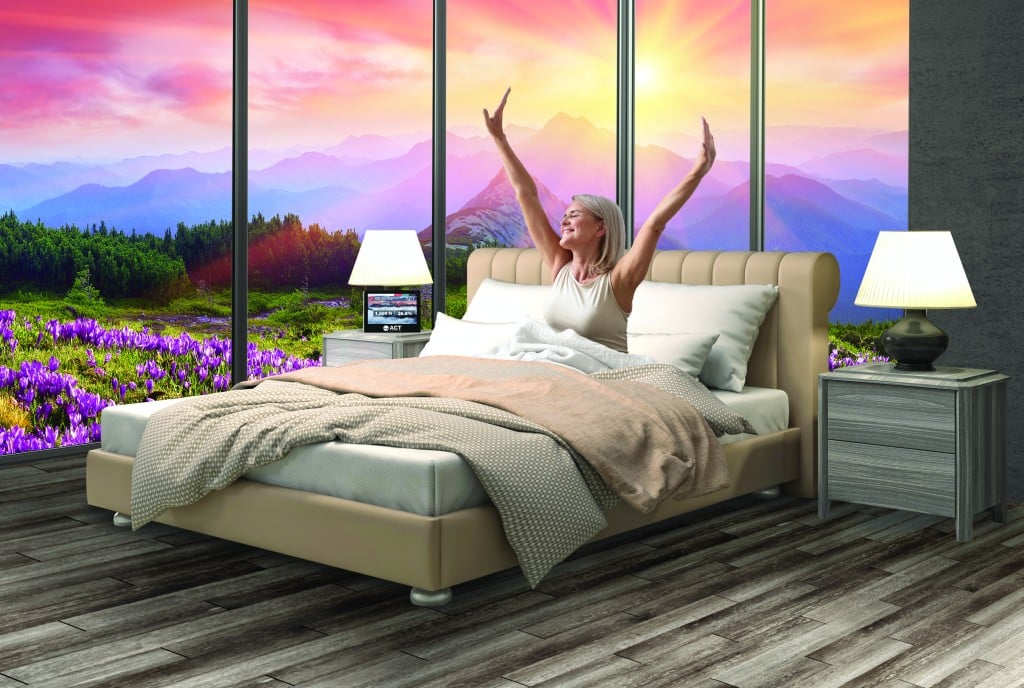How Climate Affects Sleep in the Southwest
Why Sleep Feels Different in the High Desert
Living in the American Southwest presents a unique relationship with sleep. The environment, dominated by dry air, intense sunlight, and wide temperature swings, shapes how well—and how deeply—we rest. While we often focus on lifestyle, diet, or screen time when addressing sleep issues, local climate and altitude play a more fundamental role than most realize.
Sleep isn’t just a product of internal biology. It’s a rhythm regulated by external forces. When you live in a place where the sun sets later, the air dries the skin and sinuses, and temperatures shift drastically between day and night, your sleep cycle can be thrown off in subtle but powerful ways.
How Altitude Influences Sleep Quality in the Southwest
Many cities and towns in the Southwest sit at elevations of 3,000 feet or higher. At these altitudes, oxygen levels are slightly lower than at sea level. For some, this can lead to shallow breathing during sleep, interrupted rest, or more vivid dreams. For newcomers or sensitive individuals, it may take weeks—or even months—to adjust.
This reduced oxygen saturation impacts REM sleep, the most restorative sleep phase. People may find themselves waking up more often, feeling unrested despite a full night in bed, or struggling to fall asleep altogether. Over time, the body acclimates, but that process is slow and depends on consistent sleep hygiene and supportive routines.
Understanding that altitude affects sleep is the first step to adjusting expectations and implementing more thoughtful strategies for Southwest living.
Dry Air and Its Disruptive Effects on Sleep Patterns
The desert air in places like Arizona, New Mexico, and West Texas is famously low in humidity. While this can feel refreshing during the day, at night it becomes a silent disruptor. Dry air dehydrates the nasal passages and throat, often leading to light snoring, mouth breathing, or even micro-awakenings that break the sleep cycle without full awareness.
Additionally, hydration levels affect body temperature regulation—a critical part of falling and staying asleep. In arid regions, even small deficits in hydration can raise core temperature and make sleep feel more restless.
To counteract this, many sleep experts recommend humidifiers, hydration routines before bed, and maintaining moisture in the sleep environment. But these are adjustments many don’t realize they need until sleep is already suffering.
The Role of Temperature Swings in Southwest Sleep Challenges
In most Southwestern climates, it’s not unusual for daytime temperatures to exceed 90°F, then drop 30°F or more after sunset. This kind of thermal shift can confuse the body’s natural circadian rhythm. Sleep onset is heavily influenced by internal temperature; when the surrounding air doesn’t follow a predictable curve, the body struggles to know when to begin winding down.
In the cooler months, the issue flips: cold nighttime air can lead to disrupted sleep from a chilled body core or increased nighttime awakenings. Sleep environments that don’t regulate temperature well—especially in homes built for heat, not cold—make things even more difficult.
Adapting to these shifts means taking control of your bedroom environment. Smart insulation, climate-aware bedding, and precise evening routines help signal the body when it’s time to rest—even when the environment is sending mixed signals.
Southwest Sunlight Patterns Alter Your Biological Clock
One of the most underrated influences on how climate affects sleep in the Southwest is exposure to sunlight. With abundant, often intense sunlight nearly year-round, residents are prone to late evening light exposure. This light can suppress melatonin production and delay sleep onset.
While the bright skies of the Southwest offer incredible benefits for mood and vitamin D levels, they also require proactive steps to guard circadian timing. Blue-light blocking habits, blackout curtains, and establishing consistent sleep windows become more essential for people in sunny climates than for those in more temperate zones.
What MedXtracts RX Recommends for Better Sleep in the Southwest
Adapting to Southwest living isn’t just about hydration and air conditioning—it’s about understanding how the local environment shapes your biology and adjusting your sleep strategies accordingly. At medxtracts arizona, we’ve worked with hundreds of local residents to identify the patterns unique to this region and to offer solutions tailored to its challenges.
We often recommend the following for those struggling with climate-related sleep issues:
- Establishing fixed sleep and wake times, even on weekends
- Using a humidifier during the night, especially in the cooler months
- Creating a bedroom environment that supports temperature stability and reduces light exposure
- Limiting physical activity or stimulant use in the late evening, when the body’s natural rhythm may already be struggling
Most importantly, we encourage people not to underestimate the influence of their physical surroundings. Sleep is not just about mindset or habits—it’s about context. And in the Southwest, that context demands specific attention.
What MedXtracts RX Recommends for Better Sleep in the Southwest
Adapting to the Southwest’s climate isn’t just about staying hydrated or installing blackout curtains. It’s about recognizing how your environment directly influences sleep quality—and finding solutions that align with those natural conditions. At MedXtracts RX, we focus on helping individuals develop consistent, sustainable sleep routines tailored to high-altitude, dry, and sun-intense regions like Arizona.
If you live in the Southwest and struggle with falling asleep, waking often during the night, or feeling unrested despite enough hours in bed, the answer may lie in your environment—not your habits. The dry air, elevation, and intense light are powerful disruptors that require thoughtful and region-specific strategies.
For personalized guidance and high-quality support products developed with desert living in mind, visit medxtracts arizona. Our team understands what it takes to sleep well in this region—and we’re here to help you make rest part of your everyday life.
